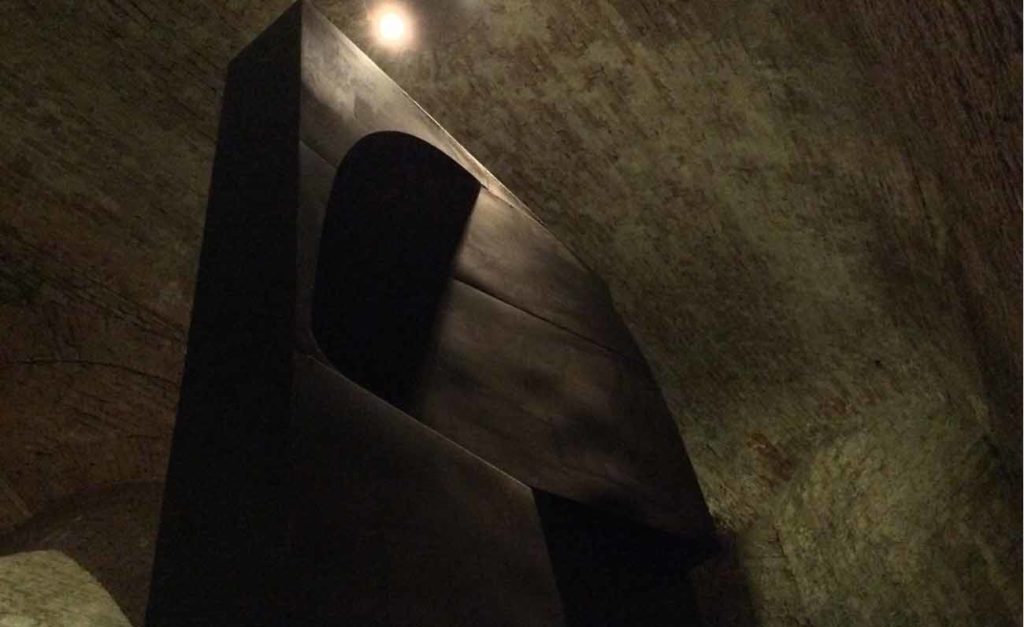An engineering masterpiece and monument-landmark of a civilisation which has been studied as much as it is mysterious: the Etruscan Well is an architectural wonder and live testament to the population which founded Perugia, as well as museum site known worldwide.

At no. 18 of the central Piazza Danti, a short walk from Piazza IV Novembre, the elegant open-air living room in town, well known due to the magnificent Fontana Maggiore, with Palazzo dei Priori and the cathedral of San Lorenzo around it there is an impressive structure dug into the underground rooms of Palazzo Sorbello, a stately home and headquarters of the Ranieri di Sorbello Foundation, a cultural association dedicated to the memory of Uguccione V Ranieri di Sorbello, a cosmopolitan intellectual, war hero, journalist and local history scholar. Following an intuition by Uguccione, around 1960, the first surveys were conducted on what he considered family property, to be studied and preserved; they confirmed that it was built by the Etruscans, something that had been forgotten despite continuing use by the local population over the centuries.
In the reception room, an introductory video constitutes the actual admission ticket to the wonders of Etruscan hydraulic engineering, presented using a basic approach, adding nothing to this spectacular natural site: the Etruscan Well is a millenary colossus, dating to the second half of the 3rd century B. C. which reaches underground as far down as 37 metres below road level. The well is still working today (even though it is no longer used as a source of drinking water), having been fed by the same three underground springs for more than two thousand years.

The well belongs to a class of engineering works spread everywhere, with the same purpose, although not always with the same shapes that, in the specific case of this structure, take on considerable dimensions: from the various speleological surveys carried out over the years it has been ascertained have a total size of 424 m3 reaching up to 424,000 liters of water.
The structure consists of a cylindrical barrel whose largest point is reached at the level of the water collection tank, where it is 5.60 metres wide and 12 m tall. The upper section of this room is definitely one of the highlights of the visit: the structure here is covered by large travertine slabs extracted from the quarries in Ellera (8 km from Perugia), a construction material which was also used to build the monumental walls around the town.
Also the top cladding of the well, supported by large slabs placed transversally and surrounded by stone beams which are stuck together without using any mortar or lime and forming two trusses weighing 8 metric tons each, is made of travertine. This homogeneity of materials and construction techniques found between the well and the Etruscan walls of Perugia, has made it possible to hypothesize that this was carried out from the beginning as a public work.

The presence of grooves detected on the surface of the travertine blocks of the upper cover has left us to suppose that for the collection of the water a rather simple system had to be used initially such as the use of buckets tied to a rope. A central pulley system would have been adopted only later, with the realization of the curb that still indicates the well at street level. In 1768, an iron lattice was made to close the mouth of the curb, on which two noble coats of arms were placed, still in iron, relating to two of the noble families who owned Palazzo Sorbello: the Eugeni counts and the Bourbon di Sorbello marquises.
The Ranieri di Sorbello Foundation has been managing the Etruscan Well since July 2016 and – during this period – it has completed an important mission aimed at enhancing the tourism experience for the visitor by means of a restoration and upgrading project with a view to enhancing the narration and use of the facility, also thanks to a fruitful collaboration with other museums in town dedicated to Etruscan archaeology, for example the Museo del Capitolo in Perugia, a starting point for the discovery of Underground Perugia: a journey that leads us inside the architectural stratifications of the acropolis of ancient Perusna (the ancient name of Perugia).

The history of Perugia has deep roots, as does the Etruscan well: an incredibly unique monument which reminds us of a distant age, still allowing us to soak in its atmosphere.
For information about opening days and hours, please refer to: www.pozzoetrusco.it
The Wikipedia page on the Etruscan Well has been updated: https://it.wikipedia.org/wiki/Pozzo_etrusco
Diego Brillini
Ultimi post di Diego Brillini (vedi tutti)
- The Etruscan Well in Perugia - Giugno 18, 2020
- The Etruscan Well in Perugia - Giugno 18, 2020
- Viaggio nella profondità del Pozzo etrusco - Giugno 18, 2020



